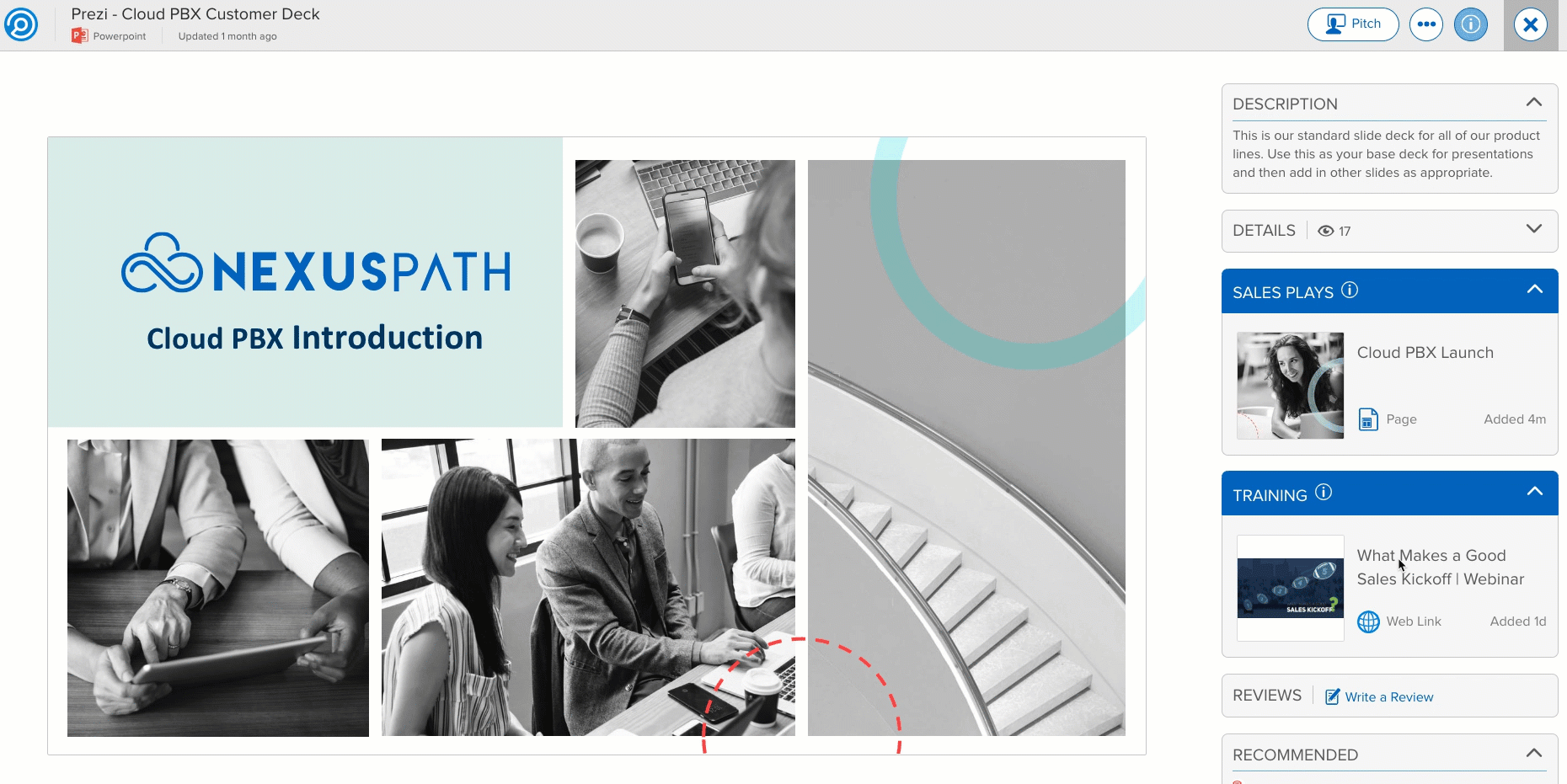Great speakers have power. They can unite nations, inspire change – and yes, close deals.
Effective salespeople are no different from the best orators of our time: they’re able to sway audiences, present compelling solutions, and build trusted two-way relationships.
Many believe that these master sellers are born talented. In reality, the ability to deliver winning presentations is learned. With the below tips and a lot of practice, you too can nail all of the types of sales presentations that you’ll encounter throughout your career.
Invest in interactive training
Presentation mastery starts with preparation. After all, no one wants to be caught flat-footed. When keeping up with the fast-paced world of modern sales, how can salespeople stay prepared? The answer lies in continuous training.
Ongoing learning is critical to sales success. Salesforce reports that 80% of high-performing sales teams rate their sales training process as outstanding or very good. Further, research has shown that without follow-up, salespeople will lose 80-90% of what they learned in training within just one month. This data makes it clear that training is not only linked to performance, but must be done routinely to make an impact.
Stay current on the latest sales tactics and your company’s messaging and product updates by attending regular training sessions. But not all training is created equal – from workshops to role-playing, training can come to life in a variety of forms. Sales leaders should ensure the training they provide their team is an immersive, interactive learning experience. One way to accomplish this is through abandoning the slide-by-slide style, and instead ensuring your presentations are engaging with visuals, multimedia, case studies, and anecdotes.
Personalize the experience
From presidential speeches to Oscar remarks, effective presentations are always personalized. This is especially true for sales presentations, as research shows that 79% of buyers only consider brands that understand and care about them.
As a seller, you can give every customer a tailored experience with a two-fold approach: focus on customizing content, and then invest in rich visuals. Starting with content first ensures you are building a personalized pitch from the start – not simply swapping logos at the last minute. Scrub your presentation to make sure every element, from your word choice to your case studies, has been specially chosen with your customer’s unique needs and pain points in mind.
Once your content is ready, it’s time to enrich your presentation with multimedia that enables you to show, not tell. Buyers are used to static customer decks, and strong visuals will help create a more unique experience. And with Highspot and Prezi’s integration, delivering personalized, beautiful presentations is easier than ever. These extra touches do more than help sales demos stand out in a sea of stagnant slide decks – they demonstrate a deep understanding of your audience’s needs. Armed with personalized, compelling content and visuals, you have the best chance of winning over your buyers.

Tell stories that connect
Salespeople could once rely on logic, numbers, and facts to close deals. This is no longer enough. Now, authentic connections are paramount – in fact, 51% of sales leaders are focusing on increasing customer retention through deeper relationships. Modern buyers don’t want to be sold to – they want to be advised.
Storytelling is a way to connect on a human-to-human level, and acts as a powerful tool sellers can use to move beyond the role of a rep and become a value-adding partner. Great speakers know that stories connect presenters to their audiences by building empathy through shared experiences. Framing your sales presentation as a story avoids overwhelming listeners with aggressive pitch tactics, and instead strengthens customer relationships by painting a picture of how the product can change the buyer’s day-to-day lives.
Learn to listen
The final tool in any seller’s bag is the ability to listen. Though it may seem contrary to building speaking skills, listening is critical to connecting with your audience.
Your audience’s perception of and reaction to your presentation is just as important as what you tell them. When content fails to land, great presenters know how to pivot on the spot and adjust to meet audience expectations – but doing so is impossible if you aren’t accustomed to letting others speak while you present. Tune into your audience by pausing for feedback during demos, giving customers space to ask questions, and keeping a pulse on changing body language that may indicate confusion or disappointment.
Ultimately, attentive listening elevates customer interactions from linear lectures to two-way conversations where both parties are actively engaged. Incorporating this skill into presentations will transform customer meetings into dynamic experiences.
Give any sales presentations with confidence
Put these four best practices put into play to go from relying on call scripts to winning the room. With the right combination of techniques and practice, you’ll be delivering the kinds of presentations that won’t just win hearts – but deals, too.
About the author: Chris is responsible for business development and alliances at Highspot. Prior to Highspot, Chris held various sales, marketing, and leadership roles at Microsoft as well as early-stage ventures.
